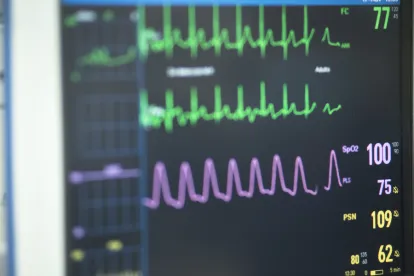On July 26, 2021, the U.S. Department of Health and Human Services (DHHS) and the U.S. Department of Justice (DOJ) issued guidance explaining that “long COVID” can be a disability under Titles II and III of the Americans with Disabilities Act (ADA), which apply to state/local government and public accommodations respectively, Section 504 of the Rehabilitation Act of 1973 (Section 504), and Section 1557 of the Patient Protection and Affordable Care Act (Section 1557).
While most individuals recover from COVID-19 within a couple of weeks, some individuals have ongoing symptoms or experience new/returning symptoms post-COVID-19 infection. Citing to the Centers for Disease Control and Prevention (CDC), the guidance states that people with long COVID have a range of symptoms that can last weeks or months after they are infected with the virus. Common symptoms of long COVID include: tiredness or fatigue; difficulty thinking or concentrating (“brain fog”); shortness of breath or difficulty breathing; headache; headache; dizziness on standing; heart palpitations; chest pain; cough; joint or muscle pain; depression or anxiety; fever; and loss of taste or smell. In some cases, people experience damage to organs, including the heart, lungs, kidneys, skin and brain.
Although the guidance acknowledges that long COVID is not always a disability, it indicates that an individualized assessment is necessary to determine whether a person’s condition or symptoms substantially limit a major life activity. The guidance also provides examples of when long COVID could meet that definition under applicable law.
In addition, the guidance outlines examples of reasonable modification or accommodations that may be necessary for individuals whose long COVID qualifies a disability, such as providing additional time on a test for a student who has difficulty concentrating or modifying procedures so a customer who finds it too tiring to stand in line can sit down without losing their place in line, among other things.
Obligations under Title I of the ADA, which applies to private employers, are beyond the scope of the guidance. However, the definition of “disability” is the same under each title of the ADA. Also, the Office of Disability Employment Policy (ODEP) at the U.S. Department of Labor (DOL) recently launched a new webpage that includes resources on long COVID, such as information on requesting and providing workplace accommodations for individuals with long COVID. In addition, ODEP released a blog discussing the impact of long COVID on workers with disabilities. DHHS, DOJ, and DOL/ODEP do not have jurisdiction over employers for purposes of ADA compliance, and the guidance is informal. The U.S. Equal Employment Opportunity Commission (EEOC), the agency responsible for enforcing the employment provisions of the ADA, has not specifically addressed long COVID on its COVID resource page. Nevertheless, the recent guidance from other agencies may preview how EEOC will view claims related to long COVID.




 />i
/>i
